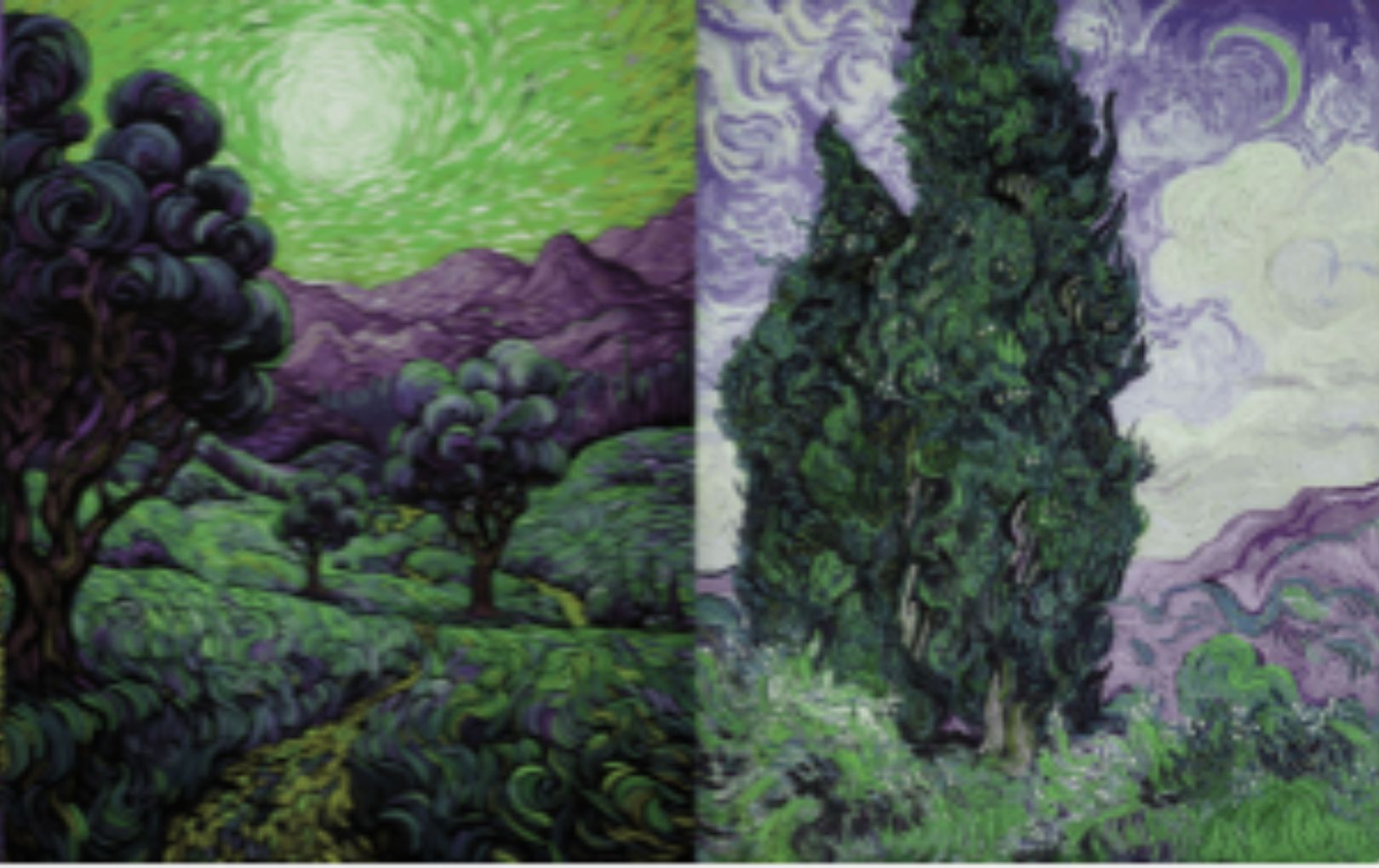Developer Offer
Try ImaginePro API with 50 Free Credits
Build and ship AI-powered visuals with Midjourney, Flux, and more — free credits refresh every month.
Artistic Ownership in the Age of AI
Imagine a new masterpiece in the style of Vincent van Gogh. The swirling skies, the thick impasto, the vibrant colors—it's all there. But this piece wasn't created by a human artist; it was generated by artificial intelligence. This scenario, once the stuff of science fiction, is now a reality, sparking a critical debate across the art world: who truly owns AI-generated art, and who deserves the credit?
 Manipulated image generated with AI (left), van Gogh's "Cypresses" (right) (Ananya Singh)
Manipulated image generated with AI (left), van Gogh's "Cypresses" (right) (Ananya Singh)
The New Digital Muse
The masterpieces of artists like van Gogh, Leonardo da Vinci, and Pablo Picasso have inspired generations. But what happens when AI can mimic their distinct styles and techniques to create something entirely new? Should these legendary artists receive posthumous credit for the inspiration their work provides to the machine?
As AI technology becomes more integrated into the creative process, it's reshaping how art is made and consumed. This has ignited a debate around creative authenticity and originality, questioning whether art created or co-created with AI should hold the same value as work made solely by human hands.
A Call for Ethical Authorship
 Ananya Singh
Ananya Singh
Addressing these complex questions is Ananya Singh, an assistant professor of visual communication design at The University of Texas at Arlington. In her new research, Singh explores how AI is challenging the traditional boundaries of creativity and authorship. She advocates for “a system that encourages innovation and protects the rights of artists and creators.”
“If someone were to take the ‘Mona Lisa,’ which was originally created by Leonardo, and modify or use it to create something new using AI, who receives credit for what’s been generated?” Dr. Singh asked. “In most cases, AI is receiving the credit, and the real artists are not being appreciated or acknowledged for the use of their original works.”
While Singh’s research notes a growing acceptance for AI-generated art and recognizes the value of experimentation, she firmly argues that original artists must be credited when their work is used as a source for AI creations.
A Proposed Solution Embedding Credit
The issue became deeply personal for Singh during recent museum visits. “I visited a couple art museums in New York and Washington recently,” she said. “I was shattered when I saw artwork that had clearly been created with AI, but there was nothing I could reference or read about the original artwork. Increasingly, creators are also running art through these programs without any knowledge of the original works or the artists—it’s devastating.”
To solve this, Singh proposes a technical solution: using AI itself to create and embed data files within AI-generated art. These files would permanently identify and credit the original artwork and the human artist who created it.
This system would address a growing problem, especially as the tools become more accessible. “As more and more people use AI to create—especially non-artists—there is a lack of awareness about how to appropriately give credit to artists,” Singh explained. “With art all around us, there needs to be a way to give credit and have it live with the original work as it gets modified, replicated and distorted.”
Compare Plans & Pricing
Find the plan that matches your workload and unlock full access to ImaginePro.
| Plan | Price | Highlights |
|---|---|---|
| Standard | $8 / month |
|
| Premium | $20 / month |
|
Need custom terms? Talk to us to tailor credits, rate limits, or deployment options.
View All Pricing Details

